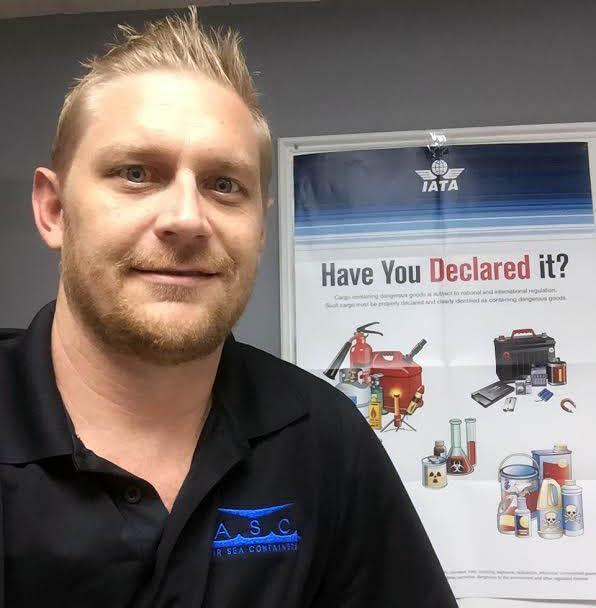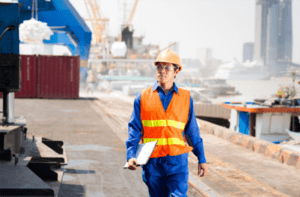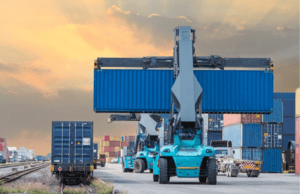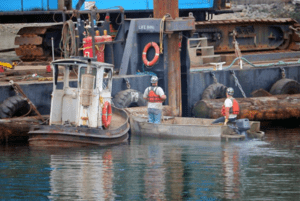
BY CORY LEVINS, Director of Business Development, Air Sea Containers
Working in ports is dangerous, and dock workers face numerous hazards on a daily basis. From the long hours and inadequate breaks to the risk of falling cargo and the dangers associated with operating heavy machinery, the hazards associated with this profession are ever-present. Many people are injured or killed in the line of duty each year. As a result, organizations like the International Transport Workers’ Federation are looking for ways to improve worker safety in ports.
Ports serve as vital hubs where goods are shipped all over the world. They are chaotic places that are filled with workers, noise and activity. Ships need to be loaded and unloaded quickly to meet strict deadlines, and sometimes, safety is compromised in the interest of speed. While it isn’t possible to avoid all the hazards that exist at ports, there are steps that can be taken to reduce the number of injuries and fatalities.
Implement Traffic Management Protocols to Protect Pedestrians

Pedestrian workers are often at the greatest risk in ports. The risk of being struck or crushed by vehicles when loading or unloading, moving through container storage areas or traveling on access bridges or ramps is high. Effective traffic management in ports helps mitigate the risk and reduce transport hazards.
When possible, pedestrians should be kept separate from traffic areas. This is especially important in container-handling areas and the routes vehicles and heavy equipment must travel when navigating throughout the port. Segregating pedestrians and traffic as much as possible significantly reduces risk without the need for major operational changes.
If pedestrians and vehicles cannot be separated completely, traffic control measures should be implemented and enforced. Road signs, lighting and marked surfaces improve visibility while ensuring that workers know where they need to be. Speed limits should also be implemented and enforced to reduce risk. Proper training, monitoring and site inductions are vital to ensure that everyone working at the port is fully aware of risk areas, safe routes and potential site hazards.
Effective traffic management requires little technical equipment and can be achieved through careful design. As a result, it costs little to implement and maintain.
Install Mirrors to Improve Visibility
Poor visibility leads to numerous accidents at ports. It is often difficult for drivers of trucks or heavy machinery to see workers on the ground, and this lack of visibility can result in potentially deadly accidents. Installing mirrors is a simple way to improve visibility. They should be installed on large vehicles and in areas with blind spots. Convex segmented, wide-angle convex and panoramic mirrors can also be used to improve visibility at ports.
Mirrors are a low-cost way to eliminate blind spots and make it easier for drivers to see areas that may be nearly impossible to see from the driver’s seat. The only downside, however, is that convex mirrors create distortion. While they make it easier to see if someone is in your blind spot, they may prevent you from being able to tell exactly where they are. Though imperfect, however, mirrors do help improve safety.
Reduce Risks from Lifting Operations

Lifting operations pose significant risks at ports. During the loading and unloading process, a wide range of lifting equipment–including slewing cranes, gantry cranes, forklifts–is used to move cargo. Loading and unloading is extremely dangerous, and accidents can occur as the result of equipment failure, falling loads, etc. Workers can also be injured by lifting equipment and moving loads.
To reduce the risks associated with lifting operations, always use equipment that is suitable for lifting a particular type of cargo. Lifting equipment should be rated to handle the load, and it should be well-maintained to avoid equipment failure.
Workers must be properly trained prior to operating any type of lifting equipment. A competent person must also be involved in planning the lift to ensure safety and efficiency. Freight should never be lifted over people who are working or passing through.
In some instances, a ship’s lifting equipment is used for loading and unloading shipping barrels, containers, pallets, etc. If this is the case, it should be subjected to a pre-use examination. If it is not in suitable condition to ensure worker safety, an alternative means of lifting should be used.
Prevent Falls from Height
Many port activities put workers at a risk of falls from height. Working near water often results in wet, slippery surfaces, and there is the added risk of drowning if a worker falls. Access to and from ships via gangways and ladders, container-top working and certain maintenance procedures all pose significant risks. Falls from vehicles and car transporters can also have devastating effects.
Prior to engaging in any work that must be carried out at height, conduct a risk assessment. Choose equipment that is suitable for the type of work that must be conducted and use it properly. Make use of safety equipment like harnesses, air bags and fall arrest systems to minimize the risk of serious injury or death if a worker falls.

When working at height near water, workers should wear a lifejacket or another suitable buoyancy aid. Suitable lifesaving equipment should be kept on dock premises. Things like handholds on the quayside at water level should also be installed to allow workers to get back on land after falling in the water.
In Closing
Docks and ports are vital components of the transportation industry and the supply chain. Unfortunately, they are filled with numerous hazards and can be extremely dangerous for workers. Ultimately, workers are responsible for making themselves aware of the potential hazards and taking steps to avoid them. When everyone remains aware and works together to create a safer environment, many injuries and deaths can be prevented.
Cory Levins serves as the Director of Business Development for Air Sea Containers. Cory oversees the development and implementation of ASC’s internal and external marketing program, driving revenue and profits from the Miami, FL headquarters.




